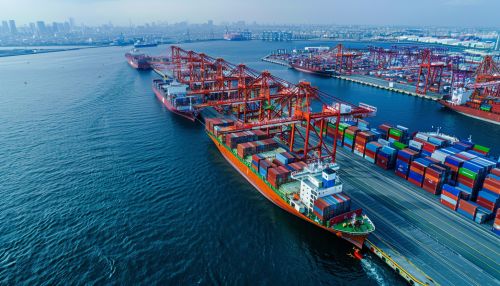Port of Tokyo
History
The Port of Tokyo is one of Japan's largest seaports and a critical hub for international trade. Established in 1941, the port has undergone significant expansions and technological advancements to accommodate the increasing volume of maritime traffic. Initially, the port was developed to support Japan's industrial growth and post-war reconstruction efforts. Over the decades, it has evolved into a multifaceted port complex, integrating advanced logistics and state-of-the-art facilities.
Geography and Infrastructure
The Port of Tokyo is strategically located in Tokyo Bay, providing easy access to the Pacific Ocean and major international shipping routes. The port covers an extensive area, including multiple terminals, docks, and storage facilities. The primary terminals include the Oi Container Terminal, Aomi Container Terminal, and Shibaura Terminal, each equipped with specialized facilities to handle various types of cargo.


Terminals
The Oi Container Terminal is the largest and most advanced, featuring automated cranes and computerized tracking systems. The Aomi Container Terminal is known for its high efficiency in handling bulk cargo, while the Shibaura Terminal specializes in liquid bulk and hazardous materials.
Logistics and Transportation
The port is well-connected to Japan's extensive railway and highway networks, facilitating seamless transportation of goods to and from the port. The Tokyo Metropolitan Expressway and the Shuto Expressway provide direct access to the port, while the Tokyo Freight Terminal serves as a major rail hub.
Economic Significance
The Port of Tokyo plays a vital role in Japan's economy, handling a significant portion of the country's imports and exports. It serves as a gateway for various industries, including automotive, electronics, and consumer goods. The port's efficient operations contribute to reducing logistics costs and enhancing Japan's global trade competitiveness.
Trade Statistics
In recent years, the port has handled over 100 million tons of cargo annually, with container throughput exceeding 4 million TEUs (twenty-foot equivalent units). Major trading partners include the United States, China, and Southeast Asian countries.
Environmental Initiatives
The Port of Tokyo is committed to sustainable development and environmental protection. Various initiatives have been implemented to reduce the port's carbon footprint and minimize its impact on the surrounding ecosystem. These include the use of shore power for docked vessels, installation of energy-efficient lighting, and implementation of waste management programs.
Green Port Certification
The port has received the Green Port Certification from the Ministry of Land, Infrastructure, Transport, and Tourism (MLIT) for its efforts in promoting eco-friendly practices. The certification recognizes ports that meet stringent environmental standards and contribute to sustainable maritime operations.
Technological Advancements
The Port of Tokyo is at the forefront of adopting cutting-edge technologies to enhance its operational efficiency. The port utilizes advanced automation systems, including automated guided vehicles (AGVs) and automated stacking cranes (ASCs), to streamline cargo handling processes. Additionally, the port has implemented a comprehensive port community system (PCS) to facilitate real-time information exchange among stakeholders.
Smart Port Initiatives
As part of its smart port initiatives, the Port of Tokyo is exploring the use of Internet of Things (IoT) devices and blockchain technology to improve supply chain transparency and security. These technologies enable real-time tracking of cargo and enhance the port's ability to respond to disruptions.
Future Developments
The Port of Tokyo has several ongoing and planned projects aimed at further enhancing its capacity and capabilities. These include the expansion of container terminals, development of new logistics parks, and upgrading of existing infrastructure. The port is also exploring the potential of offshore wind energy projects to diversify its energy sources.
Expansion Projects
One of the key expansion projects is the development of the Tokyo International Container Terminal (TICT), which will add significant capacity to handle the growing volume of containerized cargo. The project includes the construction of new berths, installation of advanced cargo handling equipment, and development of supporting infrastructure.
Challenges and Opportunities
The Port of Tokyo faces several challenges, including competition from other major ports in the region, environmental concerns, and the need to continuously upgrade its infrastructure. However, these challenges also present opportunities for innovation and growth. The port's strategic location, advanced facilities, and commitment to sustainability position it well to capitalize on emerging trends in global trade and logistics.
Competitive Landscape
The port competes with other major ports in the Asia-Pacific region, such as the Port of Shanghai and the Port of Singapore. To maintain its competitive edge, the Port of Tokyo focuses on enhancing its operational efficiency, adopting new technologies, and providing superior customer service.
